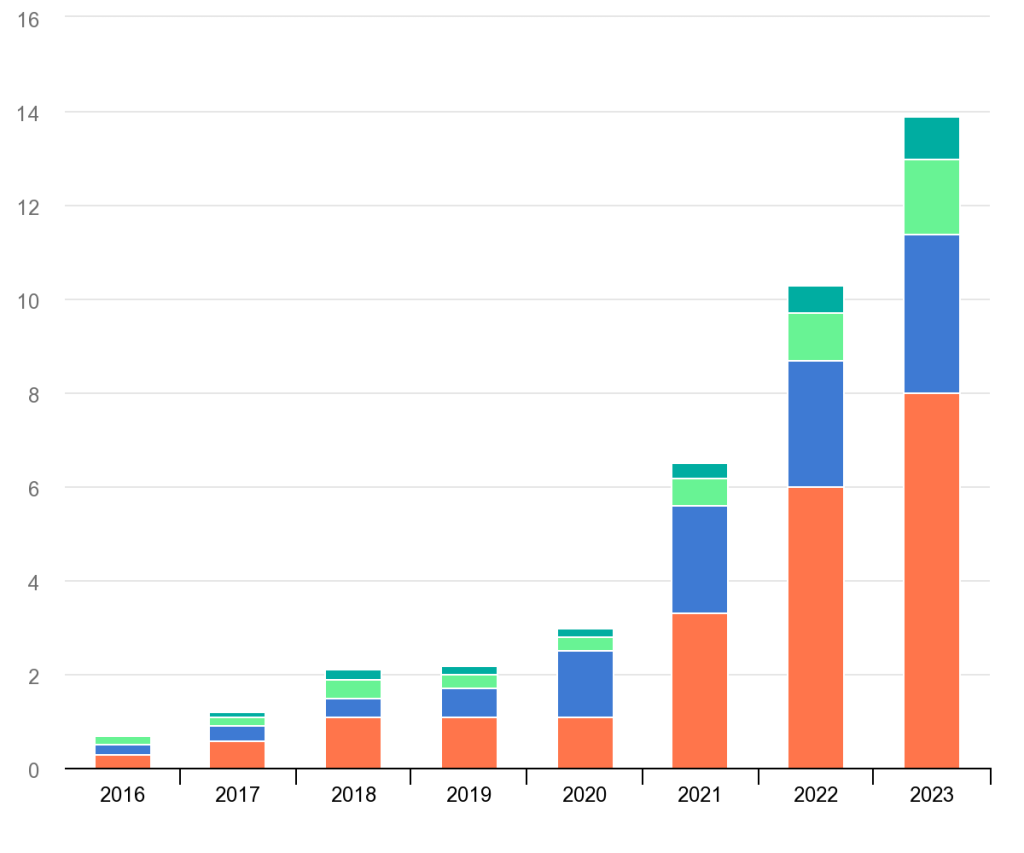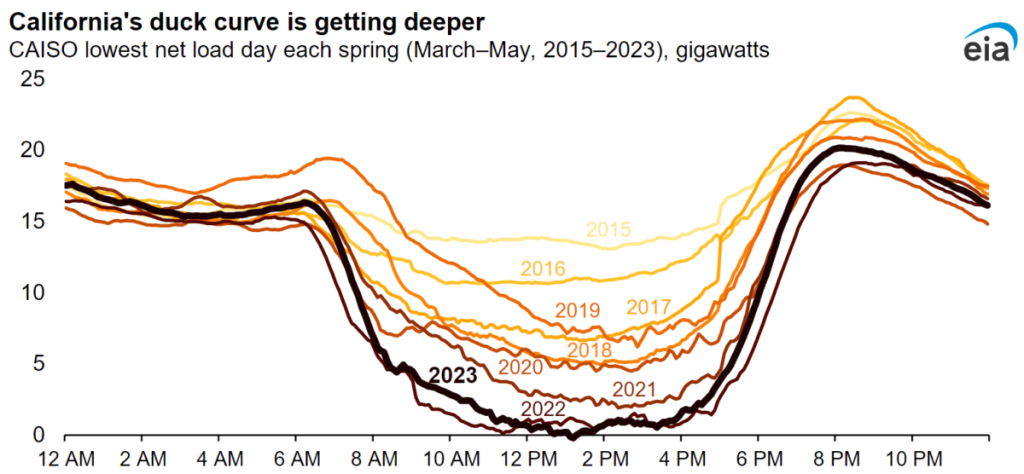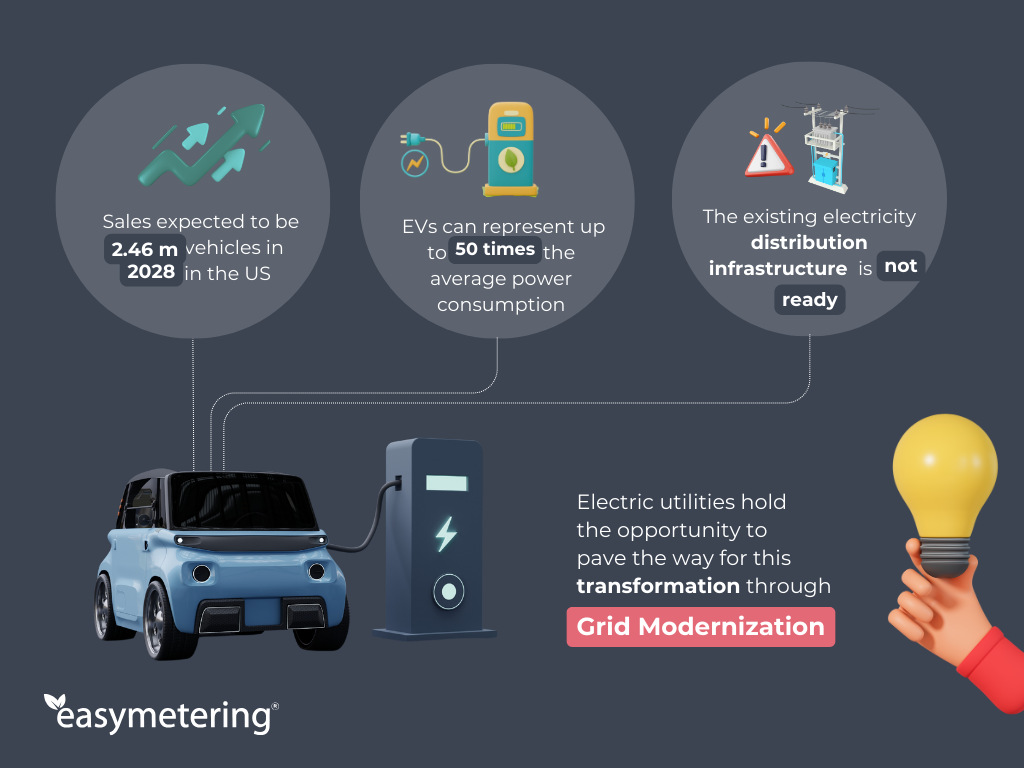Navigating the Duck Curve: Grid Optimization in the Age of Electric Vehicles (EVs)
The energy landscape is constantly changing, powered by innovation and adaptation that seems to refit the status quo every decade or two. Right now, the electric vehicle (EV) market is a significant player in this transformation. Yet, the rapid growth of EVs introduces challenges. The existing electricity distribution infrastructure and electric utilities might not be equipped to handle them. Is the distribution network ready for the upsurge in energy consumption spurred by behavioral changes and the EV market?
EV Market Growth

This rapid growth is both an opportunity and a challenge for utility companies. With the total stock of electric cars hitting 3 million, a 40% increase from 2021, and accounting for about 10% of the global total, the impact on the grid and utility services is significant. Now more than ever, grid modernization become crucial to manage this effectively.
Digging into the problem: Peak hours and Periodic Consumption
So along with EV sales, come people, families, entire households, and industries adapting to this change, so natural human behavior dictates that electricity consumption is not uniform throughout the day. Peak consumption hours usually occur between 6 pm and 10 pm, as households switch on lights, gadgets, and appliances. This phenomenon—commonly known as “peak hours”—already puts considerable strain on electricity grids.

California Independent System Operator Source: EIA
One example is California, as seen in the above graph, energy consumption has two extreme values: one at noon and another at night. During spring days, when solar energy accounts for nearly 40% of energy generation, we see a distinct “duck curve”. To counteract this curve, some plans propose water-based energy storage[2] or gravity-based energy storage[3], but these solutions are still on the horizon.
The EV market is growing at an unprecedented rate, bringing both opportunities and challenges. EVs can represent up to 50 times the average power consumption during their charging periods, exacerbating the load during peak hours. Given the current statistics, future demand is expected to soar as EV adoption continues, transforming the duck curve into something even more challenging—let’s call it a “giraffe curve.”
Why is Grid Optimization KEY?
Recognizing these challenges, technology plays a crucial role in shaping our approach to solving them. Real-time energy measurement data can provide invaluable insights into usage patterns, helping to optimize distribution and alleviate grid stress. Edge-powered solutions are particularly beneficial in this regard, enabling rapid, localized decision-making that can more effectively balance load and supply. Moreover, broadband infrastructure serves as the backbone for these technologies, ensuring that they can operate efficiently and in real-time. These tech-driven solutions are essential prerequisites for tackling the imminent challenges of the growing electric vehicle market.
Easymetering offers a way to leverage current infrastructure to its potential by enabling a smart grid with distributed intelligent devices. These devices help in:
- Smart Load Balancing: Distributing electricity across a single distribution line more effectively.
- Optimizing EVSE Charging Capabilities: Managing and adapting the charging of electric vehicles to minimize grid stress.
- Autonomous Health Electrical Grid: Providing real-time data and insights into the electrical grid’s health and functioning.
The rising number of EV chargers and the inherent nature of peak-hour consumption are threatening to constrain our power grids. Easymetering is an innovative solution to mitigate these constraints, but it is also crucial for utility companies and policymakers to accelerate the deployment of new technologies and infrastructures. The current duck curve shows elevated consumption levels even without a large number of electric vehicles. By 2030, as EVs become more prevalent, we will see this curve become more pronounced, reinforcing the urgent need for solutions.
Conclusion
As we move towards a more sustainable future, we must prepare for the complications that come with it. The growing adoption of electric vehicles is indeed a step in the right direction for reducing carbon emissions, but it also raises questions about the grid’s capacity to handle this new level of dem
